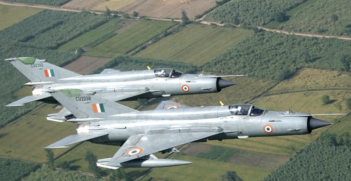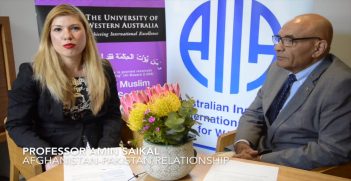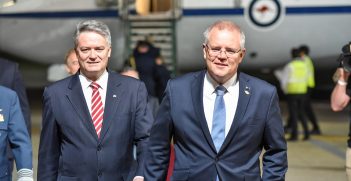Reinvigorating the Australia-India Relationship During the Pandemic
Australia has provided considerable assistance to India during these difficult times, which is highly welcome. Indeed, there appears to be an upsurge of goodwill towards Australia in India.
There is no dearth of writing on what the world will look like after the pandemic ends. In comparison, there is little available on how inter-country relations are evolving during the pandemic. What will happen post-pandemic (whenever that may be) will depend on the path we traverse now. The edifice of inter-country relations stands on four pillars: (i) government-to-government relations, (ii) economic and business relations; (iii) relations with other countries including friends and rivals; and (iv) people-to-people relations, so-called Track II diplomacy.
The Australia-India relationship, obviously important for the two countries involved, has tremendous implications for the Asia-Pacific region and beyond. During the COVID-19 pandemic that has raged for more than a year, both countries have gone through difficult times. However, the level of engagement at the government-to-government level has always been robust, even when leaders have not been able to meet face to face. The strategic partnership dialogues between the two countries have moved forward rapidly with concrete plans of action being drawn up and executed. The Australian prime minister has spoken at the Raisina Dialogues and has always been warmly received there, even though these speeches have been delivered virtually.
Economic relations are excellent, notwithstanding the fact that India did not sign the Regional Comprehensive Economic Partnership (RCEP) treaty. In particular, there has been substantial liberalisation of the foreign direct investment (FDI) regime in India, which augurs well for Australian businesspeople. Australia’s transparent FDI regime provides many opportunities for Indian businesses. Although neither Australia nor India is among each other’s leading trade partners, two-way trade between the two countries is likely to grow sharply as both economies are expected to make swift recoveries from the COVID-19-induced recession. Clearly, then, relations between the two countries at the governmental and business levels are robust and warm.
The crowning glory in the Australia-India official relations was the formalisation of the Quad relationship between Australia, India, the US, and Japan. This was exemplified by the conduct of naval drills, known as the Malabar exercises, by the navies of the four countries in late 2020.
At the same time, Australia’s relations with its leading trade partner, China, have soured ever since Australia asked for an impartial inquiry into the origins of the COVID-19 virus, given that it originated from Wuhan in China. Many Australian exports have been subjected to restrictions and tariffs by China. Investment relations between Australia and China have also been strained. India’s relations with China have been strained at least since the last all-out war in 1962 between the two countries.
Therefore, there is both a pull factor (warm relations at the governmental and business levels) and a push factor (finding alternates to the dependence on China for products and markets) bringing Australia and India closer together. Indeed, Australia-India relations at the current point in time are warmer than they have been in decades. There is need to capitalise on this bonhomie.
This then brings us to the fourth pillar of the relationship – Track II diplomacy. The primary function of Track II diplomacy is to build trust between countries at the people-to-people level. This would include activities such as the rapid dissemination of news and information about both countries, sports and cultural links, and friendly relations between peoples of the two countries in nearly all aspects of human-to-human interaction.
It would appear that these people-to-people interactions between Australia and India would be easy to promote. After all, both are open societies with free presses. They have strong sports ties, particularly in cricket which is a national obsession for both countries. There are strong cultural and artistic ties between the two peoples. Indians are the largest source of immigration into Australia and, under ordinary circumstances, many Indian students study in Australian universities.
Yet, there have been instances, during trying times, when there have been problems with Track II links between Australia and India. The support given by many Australian press outlets to the farmers’ agitation in India against the new farm laws without considering the possibility that this agitation may be a super-spreader of COVID-19 is one such instance. Another instance is the on-going second wave of the virus in India. The number of new infections is now at more than 350,000 per day, breaking previous daily infection records set in US and Brazil. At the same time, there are more than 300,000 recoveries from COVID-19 every day.
The total number of COVID-19 cases in India as of 5 May reached 20,665,148, with 226,188 deaths. India has now vaccinated over 160 million people, and daily vaccination rates in India remain high. Yet, watching some of the TV news channels in Australia, one would not be faulted if they believed that a very grim tragedy was unfolding in India and the government had lost control. Yes, there were some problems in the logistics of supply of oxygen cylinders (largely overcome now) and in the supply of Remdesivir (a cure with a doubtful reputation for treating COVID-19). However, hospitals and health personnel are assiduously reporting for duty and going out of their way to treat patients. India has gifted or exported 59 million doses of vaccines and is scheduled to supply more to many countries, including Pakistan.
India’s two vaccines are Covishield, an indigenous name for the AstraZeneca vaccine, and Covaxin, India’s own vaccine which neutralises many variants of the virus. These vaccines have high efficiency rates with reinfection rates in the vicinity of 0.04 percent. Recently, the Russian Sputnik V has been added to the set of vaccines being used in India. It is widely expected that by mid-May or early June, the second wave will peak in India, after which one can expect a respite. A sizable chunk of the population will have been vaccinated by that time so that even if there is a third wave, its impact will be softer.
So, the upshot of the argument is that parts of the Australian media have presented a rather one-sided picture of India’s second COVID-19 wave. Such incomplete information affects not only the fourth pillar of inter-country relations, but it could also spill over into other areas of Australia-India relations.
Raghbendra Jha is a Professor of Economics and Executive Director of the Australia South Asia Research Centre at the Australian National University.
This article is published under a Creative Commons License and may be republished with attribution.





